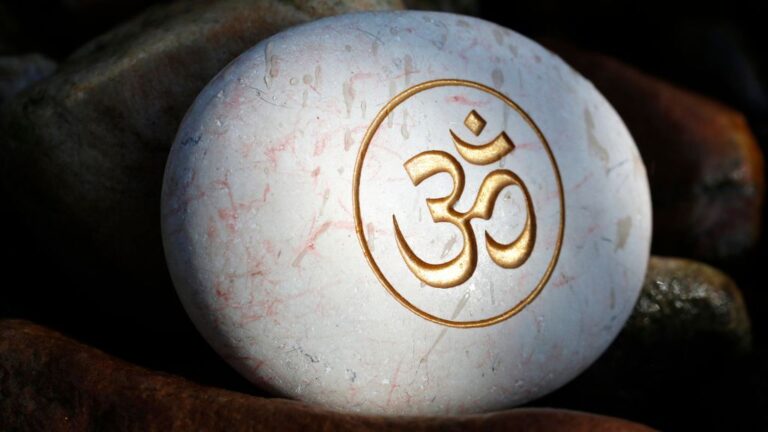How to Reach Your Goals Quickly with Divine Inspiration

8 Steps to Manifesting Your Goals
Goals are great! We all have them and I’m willing to bet you have a few you’re striving to reach right now. In today’s fast-paced world, we tend to want what we want now—that all too familiar feeling of instant gratification. We can become attached to a specific outcome or desired result when setting our goals as well. Unfortunately, this often leads to disappointment or feelings of failure when our goals are not fulfilled to meet our desired outcome. Oftentimes we choose to focus on the end result, so much so, that we miss out on the wonderment of where we are right now as well as the journey we take along the way. I’ve struggled with this myself and over the years I’ve found a few ways to set and reach my goals where I’m actually enjoying the process and delighting in the results.
This goal setting process helps infuse your goals with divine inspiration, intention and purpose. Pick one goal you want to work on, grab a pen and paper or prepare to type and find a quiet place where you will be uninterrupted for around 15-20 minutes.
Step 1: Settle the Mind
Start with meditation to quiet your mind and become fully present. Sit in a comfortable crossed legged position, spine is tall—close your eyes. Bring your attention to your breath, but don’t try to change it, just notice and observe it.
Step 2: Focus on Your Goal
Keeping your eyes closed, bring your goal into your awareness. Using your third eye, your yogic eye or center of wisdom, start to form a general picture or outline of your goal.
Step 3: Include the Senses
We start to invite in the senses now by focusing on the Tanmantras, one by one, adding in the smells, the sounds, the feelings—start to create a more defined picture of your goal now. In your mind’s eye, see yourself taking the steps to reach your goal; is there anyone else there with you, helping you? See the goal as a movie, playing from beginning to middle and end.
Step 4: Be Open to an Alternate Ending
You will most likely start to form a sought after or pleasing ending to your goal, which is great. And I would like to suggest that you also remain open to all or any alternate endings that are in the highest and best good, for yourself and everyone involved. Often times we will achieve our goals in ways we never thought possible, in ways we didn’t intend on when we first started out. This is why it is important to honor and be aware of all possibilities, even if that ends up looking totally different than what you had intended or envisioned. Keeping an open heart and mind, allowing the divine to guide you and send you the instructions you need, is most recommended here.
Step 5: Surrender and Seal the Deal
As you sit with your eyes closed, envisioning your goal and welcoming in the divine light, feeling the Asamprajnata Samahdi or super consciousness, continue to sit quietly for a few more minutes. The practice of Ishvarapranidhana, is the practice of surrendering to this divine higher purpose.
Step 6: Data Dump. Don’t Try to Analyze It
Gently start to blink your eyes open and immediately following your meditation, while still in a calm relaxed state, write or type out the name of your goal and anything that came through to you during your meditation. Do not try to sensor your thoughts or feelings, just let the words flow out of you freely surrounding your goal and the messages, thoughts, pictures or emotions that presented themselves to you during your meditation. Don’t try to analyze it, just let this data dump occur naturally and flow out of you without trying to change or sensor it.
Step 7: Become Fully Present and Thank Yourself
Become fully present and take a moment to thank yourself for taking the time and energy towards achieving your goals in a divinely inspired way. Keep a feeling a lightness and gratitude, a sort of playful approach to achieving your goal. Be open to all perceived challenges throughout the journey, seeing them as lessons needed to help you reach your goal from a deep and divine place, rather than as a block in your way. Be patient and kind to yourself and allow your goal to unfold naturally, without force or attachment to the final outcome.
Step 8: Take the First Step Right Now
Now it is time to get started! Choose one single action item or step that you can take towards your goal right now. First, type or write down the first step you’re choosing to take right now. Next, ask yourself why you chose that step to start, why is it necessary? Continue to write out how you will accomplish this task, listing everything that comes to mind. You may be pleasantly surprised that options or ways to accomplish your goal may randomly appear to you, so don’t be afraid to take inspired action.
Remember, goals are great but they’re even better when you create them with divine loving care and continue bringing them into fruition with divine inspiration and action. Continue taking the inspired action and complete the first step forward towards reaching your goal. Repeat this process working on each individual action item or step needed for your goal. Each time you meditate on your goal, using all of your senses, you set and strengthen the blueprint. It is well worth your time and effort.
Happy Manifesting!
**Cheryl **is an Entrepreneur, Mother, Yoga Devotee, Yoga Therapist and health conscious Vegan who strives to share the gift of yoga with everyone she comes in contact with. She uses Yoga Therapy to achieve goals such as weight loss, stress reduction, emotional healing, and manifesting. Making time to honor a daily yoga practice is a high priority and can completely transform your life- for the better.
Facebook: Live Yoga Everyday
Youtube: Live Yoga Everyday
What Is the Om Mantra: Origin and Meaning

The mantra “Om” is much more than a simple syllable in yoga practice; it is an ancestral link with the universe and the divine. This article explores the secrets of this powerful mantra, delving into its origin, pronunciation, and meaning in yoga and spirituality.
Table of Contents
- Meaning of the Om Mantra
- What Is the Origin of the Om Mantra?
- How Is 'Om' Pronounced Correctly?
- What Does Om Mean in Yoga?
- Why Is Om Chanted in Yoga Classes?
- Benefits of Chanting the Om Mantra
- What Does the Om Symbol (ॐ) Represent?
Meaning of the Om Mantra
The Om mantra, symbolized by the sacred ॐ, is one of the most ancient and revered mantras in the spiritual traditions of India. It represents the essence of the universe, being a primordial sound that encapsulates truth and ultimate reality. In its vibration, Om encompasses everything that exists and everything that does not exist. This sacred sound is a synthesis of the spiritual and the material, symbolizing the union of the individual soul with the Divine, the Brahman, the ultimate reality.
More than just a syllable, Om is a symbol of connection and unity. In spiritual practices such as yoga and meditation, chanting Om helps align individual energies with those of the universe. Each repetition of Om is a reminder of our relationship with creation and a call for harmony and inner peace. It acts as a bridge between the material and spiritual worlds, facilitating the path to enlightenment and profound self-understanding.
What Is the Origin of the Om Mantra?
The origin of the Om mantra dates back to the ancient scriptures of India, such as the Vedas and the Upanishads, which are thousands of years old. In these texts, Om is presented as a cosmic sound, the original sound of the universe from which everything else emerged. This concept is found in various Dharmic philosophies and religions, such as Hinduism, Buddhism, and Jainism, where Om is considered the root of all spiritual knowledge.
In Hindu philosophy, Om represents the whole, the totality of existence, and is associated with the most important gods such as Brahma, Vishnu, and Shiva. In Buddhism, especially in tantric traditions, it holds great importance as part of longer mantras. This universality of Om underscores its significance in spiritual and philosophical practices, being a symbol of unity, peace, and spiritual knowledge throughout the ages.
How Is “Om” Pronounced Correctly?
Correct pronunciation of Om is essential for its effect and meaning. The syllable is pronounced “AUM” and consists of three sounds: A (ahh), U (ooh), and M (mmm). These three sounds symbolize different aspects of divinity and existence. The sound “A” represents the beginning, creation; “U” symbolizes preservation, and “M” represents transformation or destruction. When combined, these sounds represent the complete cycle of existence.
When pronouncing Om, the sound begins with an open and deep “A,” which starts in the throat and opens toward the chest. The sound transforms into “U,” moving toward the palate and vibrating in the middle of the mouth. Finally, the “M” closes the mantra, with a vibration that resonates in the front of the mouth and skull. This process not only has spiritual significance but also helps align and calm the mind and body, preparing them for meditation or yoga practice.
What Does Om Mean in Yoga?
In yoga, Om represents much more than a simple chanting or meditation practice. It is a symbol of profound connection between the practitioner and the universe. By chanting Om at the beginning or end of a yoga session, the goal is to harmonize the mind, body, and spirit with universal energies.
This sacred sound acts as a catalyst for mental tranquility and concentration, creating a space of serenity and focus for practice. Om in yoga not only prepares the body and mind for the session but also symbolizes the intention to unify the individual self with the cosmic whole, facilitating a deeper and more enriching experience.
Why Is Om Chanted in Yoga Classes?
Chanting Om in yoga classes serves several purposes. First, it creates a bond of connection and unity among participants, establishing a collective atmosphere of focus and serenity. Additionally, the vibrant sound of Om helps calm the mind and center attention, clearing mental and emotional noise.
Chanting Om is also considered beneficial for physical health, as the vibration generated can help relax muscles and calm the nervous system. This practice is not only a symbolic introduction or conclusion to the yoga session but also a powerful tool for deepening the spiritual and physical experience of yoga.
Benefits of Chanting the Om Mantra
Reciting the Om mantra has multiple benefits for both the mind and body:
- Reduces stress and anxiety: The vibration of Om induces relaxation, decreasing tension and mental restlessness.
- Improves concentration: The focus required to correctly chant Om helps enhance attention and mental clarity.
- Encourages spiritual connection: Repeating Om can intensify the feeling of spiritual connection and unity with the universe.
- Aligns body energy: The vibration of Om can help balance and align the chakras or energy centers in the body.
- Promotes respiratory health: Chanting Om involves conscious breath control, which can improve lung capacity and breathing.
What Does the Om Symbol (ॐ) Represent?
The Om symbol (ॐ) is a rich and complex visual representation of the Om sound. Each part of the symbol has a specific meaning: the lower curve symbolizes the waking state, the upper curve represents the deep sleep state, and the curve extending outward symbolizes the dream state. The crescent and dot at the top symbolize the transcendental state, a level of consciousness beyond conventional physical and mental states.
This symbol not only represents different states of consciousness but also the essential aspects of the universe: matter, soul, and God. The Om symbol is a visual reminder of the connection between the microcosm (the individual) and the macrocosm (the universe). In spiritual practice and daily life, the Om symbol serves as a constant reminder of our essential nature and our connection with everything that exists.
Whether through chanting or visual representation, Om is a timeless tool for those seeking harmony, balance, and a deeper connection with themselves and the universe.





































